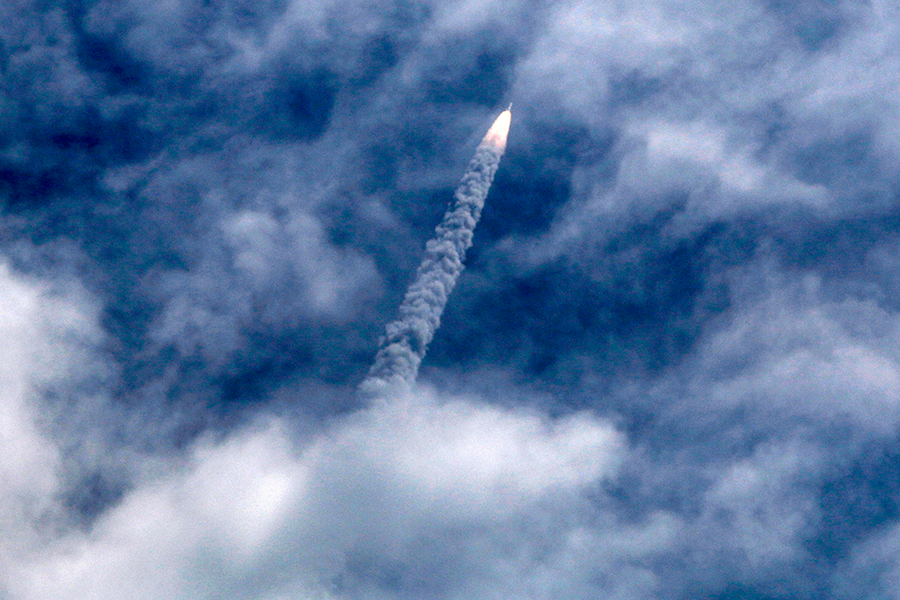India's space telescope: Is it a big deal?
Loading...
On Monday, India added another notch to its space belt by launching its first space observatory into orbit.
The telescope, called Astrosat, launched this morning along with satellites from the US, Canada, and Indonesia from the Satish Dhawan Space Centre in Sriharikota, in the state of Andhra Pradesh.
“This scientific satellite mission endeavours for a more detailed understanding of our universe,” said the Indian Space Research Organization (ISRO) in an announcement. Astrosat will study distant stars, white dwarfs, pulsars, and the supermassive black hole astronomers believe lies at the center of our Milky Way galaxy, reports the Hindustan Times.
The launch marks a milestone in India’s burgeoning space program and a boon to national pride in a developing country that’s eager to foster a vibrant technology business sector.
Prime Minister Narendra Modi was in Silicon Valley just this weekend meeting with tech executives from Facebook, Microsoft, and Google to promote India as an innovation hub and a fertile investment opportunity.
“Modi wants to transform India using technology and innovation in a way no other Indian leader has before,” M.R. Rangaswami, an Indian-American entrepreneur in Silicon Valley told Forbes last week.
India's space technology has seen significant momentum recently. In September 2014, it became the first Asian country to successfully orbit Mars, on its initial attempt, during a mission called Mangalyaan.
Only the United States, the former Soviet Union, and the European Space Agency had done that before, though not on their first tries, reported The Christian Science Monitor.
The event gripped the nation, as tens of millions of people across India followed the progress of the Mangalyaan mission on TV.
"We have dared to reach out into the unknown and have achieved the near impossible," Modi said of Mangalyaan last year, according to the Monitor.
With the launch of the Astrosat today, which is a tenth of the size of NASA’s Hubble telescope, India claimed another first: becoming the first developing country to place an observatory in space, reported the Guardian.
Only the space agencies of the United States, Japan, Russia, and Europe currently have telescopes in space collecting data.
Chief Minister of the state of Gujarat, Anandiben Patel, this morning tweeted, "With the successful launch of ASTROSAT, India joins a league of elite nations having space observatory. Hearty congrats to@ISRO, you make us proud!"
With a space exploration budget of about $1 billion – compared with $17.6 billion in the US – India has developed satellite, communication and remote sensing technologies to measure coastal soil erosion, assess the extent of remote flooding, and manage forest cover for wildlife sanctuaries, reports The New York Times.





